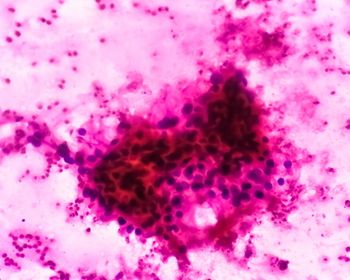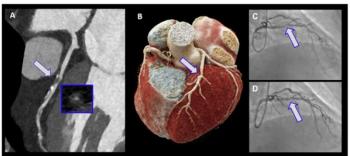
Emerging Research at SNMMI Examines 18F-Flotufolastat in Managing Primary and Recurrent Prostate Cancer
In a recent interview at the SNMMI conference, David Gauden, D.Phil, discussed key findings from new research evaluating the use of the PET radiotracer 18F-flotufolastat in patients with primary prostate cancer (PCa) and men with biochemical recurrence of PCa.
In separate studies presented at the recent
In one study comparing 18F-flotufolastat (Posluma, Blue Earth Diagnostics) and 68Ga-PSMA-11-PET in 124 patients with
The researchers also emphasized that there was no ureter retention with 18F-flotufolastat in comparison to 21 percent (13/62) for men in the 68Ga-PSMA-11-PET group.1
David Gauden, D.Phil, discussed these study results during an interview at the SNMMI conference.
“Their findings were clinically impactful in their opinion in that they had a much lower background radioactivity in the bladder (with 18F-flotufolastat) when they were evaluating the scans. (This) gave them more confidence in their diagnostic findings when they evaluated it on a multi-point scale of background (radiopharmaceutical) activity, leading them to believe that when you’re looking for local recurrences, using an agent with this lower bladder excretion could be clinically valuable in helping with the management of these patients,” noted Gauden, the chief executive officer for Blue Earth Diagnostics.
(Editor’s note: For related content, see “
In a separate study of 110 patients with biochemical recurrence of PCa after radical prostatectomy, researchers compared 18F-flotufolastat PET-guided salvage radiotherapy (SRT) to conventional SRT. Although the researchers conceded a lack of statistical significance, they found that the 18F-flotufolastat PET-guided group had 8 percent, 15 percent, and 21 percent higher rates of biochemical failure-free survival at one, two and three years, respectively, than those who had conventional SRT.2
“Although it was a small study without a statistically significant finding, there were trends toward longer biochemical progression-free survival for the group where the radiotherapy was guided by PET imaging in addition to the standard field … ,” added Gauden.
For more insights from Mr. Gauden, watch the video below.
References
1. Rauscher I, Langbein T, Fuetterer CS, Weber W, Eiber M. Evaluation of qualitative and quantitative PET parameters in primary prostate cancer patients: double-match comparison of 18F-flotufolastat and 68Ga-PSMA-11-PET. Presented at the 2024 Society of Nuclear Medicine and Molecular Imaging Annual Meeting, June 8-11, Toronto, Canada. Available at:
2. Rauscher I, Vogel MME, Gschwend J, Peeken JC, Eiber M. 18F-rhPSMA-7 and 18F-flotufolastat PET-guided salvage radiotherapy in recurrent prostate cancer. Presented at the 2024 Society of Nuclear Medicine and Molecular Imaging Annual Meeting, June 8-11, Toronto, Canada. Available at:
Newsletter
Stay at the forefront of radiology with the Diagnostic Imaging newsletter, delivering the latest news, clinical insights, and imaging advancements for today’s radiologists.


























